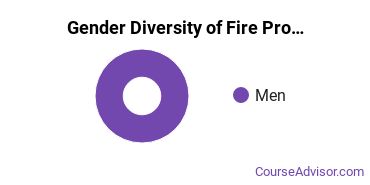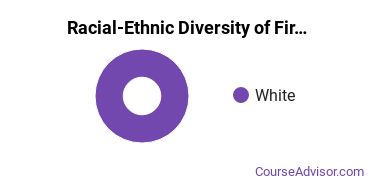Fire Protection at Three Rivers College
Three Rivers College is located in Poplar Bluff, Missouri and approximately 2,759 students attend the school each year.
Want to know more about the career opportunities in this field? Check out the Careers in Fire Protection section at the bottom of this page.
Three Rivers College Fire Protection Degrees Available
- Basic Certificate in Fire Protection (Less Than 1 Year)
- Associate’s Degree in Fire Protection
Three Rivers College Fire Protection Rankings
Fire Protection Student Demographics at Three Rivers College
Take a look at the following statistics related to the make-up of the fire protection majors at Three Rivers College.
Three Rivers College Fire Protection Associate’s Program

The following table and chart show the race/ethnicity for students who recently graduated from Three Rivers College with a associate's in fire protection.

| Race/Ethnicity | Number of Students |
|---|---|
| Asian | 0 |
| Black or African American | 0 |
| Hispanic or Latino | 0 |
| White | 1 |
| International Students | 0 |
| Other Races/Ethnicities | 0 |
Concentrations Within Fire Protection
The following fire protection concentations are available at Three Rivers College. The completion numbers here include all graduates who receive any type of degree in this field from Three Rivers College. Some of these focus areas may not be available for your degree level.
| Concentration | Annual Degrees Awarded |
|---|
Related Majors
Careers That Fire Protection Grads May Go Into
A degree in fire protection can lead to the following careers. Since job numbers and average salaries can vary by geographic location, we have only included the numbers for MO, the home state for Three Rivers College.
| Occupation | Jobs in MO | Average Salary in MO |
|---|---|---|
| Firefighters | 6,500 | $51,100 |
| Managers | 3,980 | $97,820 |
| Fire Fighting Supervisors | 1,160 | $73,390 |
| Fire Inspectors | 230 | $44,930 |
References
*The racial-ethnic minorities count is calculated by taking the total number of students and subtracting white students, international students, and students whose race/ethnicity was unknown. This number is then divided by the total number of students at the school to obtain the racial-ethnic minorities percentage.
More about our data sources and methodologies.
